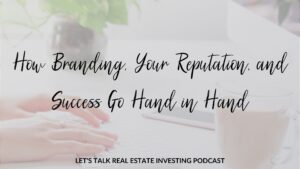 How Do I Figure Out How Much To Offer?
How Do I Figure Out How Much To Offer?
If you ask half dozen investors how they go about making offers when they want to buy investment property, you will most likely get 6 different answers. There are so many things to take into consideration. Most all real estate investors either use or are familiar with the 70% ARV (after repaired value) way of figuring out a dollar amount for the offer. Using this formula combined with other criteria, is probably the most common way to they determine what their offer will be to buy any investment property.
Comps
The first thing that I do is to get the “comps” for the area. Comparable sales for an area or “comps”, tell you what the houses in that area are selling for. I look at all of them, and I try to gauge if the highest comps are true values or is it just a fluke that they sold that high. Also, I will try to determine why they were among the highest selling prices. Were the houses completely renovated? Did they have something that was larger or better than the rest? Maybe there was a finished basement. There are no shortcuts when you are trying to figure out what to offer to buy investment property.
The lowest numbers will almost always be houses purchased by investors. They may be distressed houses in need of a lot of work or they could be foreclosures. Either way, they are most likely not your true values for the neighborhood. However, they are very likely the amount an investor is willing to pay for a comparable house in that area. This is one thing I will use to gauge how much to offer. In looking at the ARV, I am going to be looking at the average of the middle group of houses in most cases. Crafting an offer to buy investment property takes a little practice.
What Is the 70% Formula?
The second thing to look at is the “70% of the ARV less repairs” formula. This very simply is the percentage an investor will be willing to pay for a house. If you are going to rehab the house your formula would look something like this:
If the after repaired value (ARV) of a house is $100,000 you take 70% of this number ($70,0000). Knowing that the house needs $15,000 in repairs, you subtract this number and come up with $55,000. ($70,000-$15,000=$55,000) . This is the MAO or maximum allowable offer you can make to the seller. If you are a wholesaler you will need to subtract your fee from the MAO to get the new maximum allowable offer. In any case, you must be able to use this formula when you buy investment property.
This is why it is critical to know what the house will actually sell for when the repairs/renovation is completed. Whenever there is any doubt about the ARV, plug in the lower number to be safe. The one thing you don’t want to do is to “hope” it will sell for a higher price and end up losing money on the house.
What Can I Expect To Make?
This is always the first question any investor asks himself when he wants to buy investment property. At first glance 30 percent may seem like a lot of money to leave for the investor. But, in addition to all of the repair costs which have been put into the formula, he will have other costs while the house is under renovation. There will be holding costs such as interest he may be paying on money used to fund the deal, utilities, insurance and lawn care to name just a few. One thing you need to know when you buy investment property, is that in most cases your homeowners’ insurance costs will be higher because the house is vacant during the renovation. The investor may also need to list the house with a Realtor and pay a commission when it is completed to get it sold. As you can see, the rehabber is not really going to make 30%. He does however need to be compensated for the work he has done and the risk he is taking. Otherwise, there would be no point to buy investment property.
After looking at this formula, I will determine if there are any other variables I need to take into account that could impact the value of the house. Once I am convinced that I have included everything, I will be ready to make the offer.
Check back later for information on earnest money deposits, inspection contingencies, transactional funding, and more.
If you missed Part 1 of this article Click Here to read it …
If you missed Part 2 of this article Click Here to read it ….
f you’re not already subscribed to the “Inner Circle”, be sure to do that today so you don’t miss any of the business building tips I have coming your way. I want this year to be your best year ever! And if you enjoyed this article, please share it.








